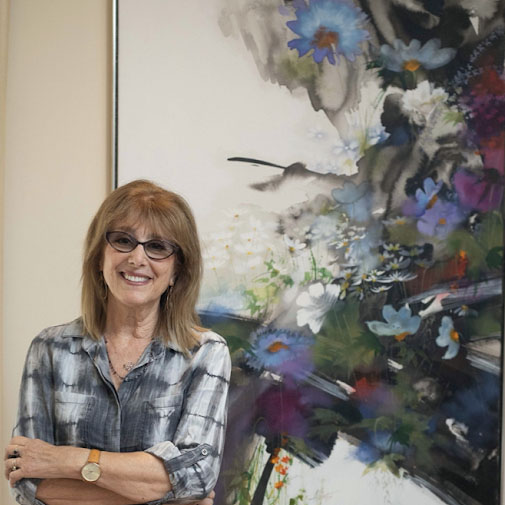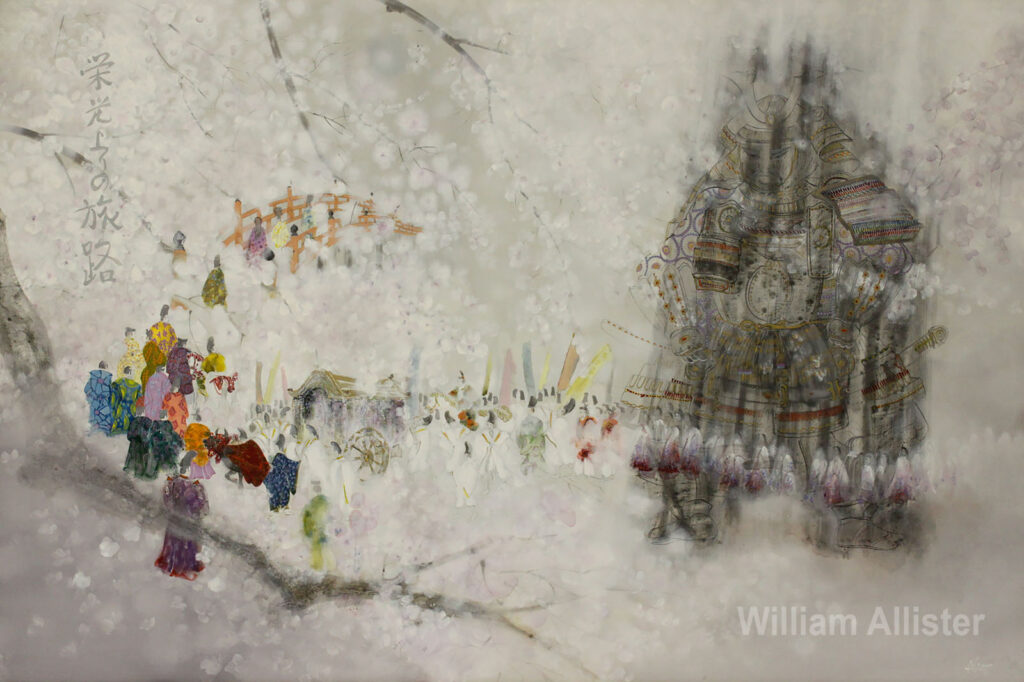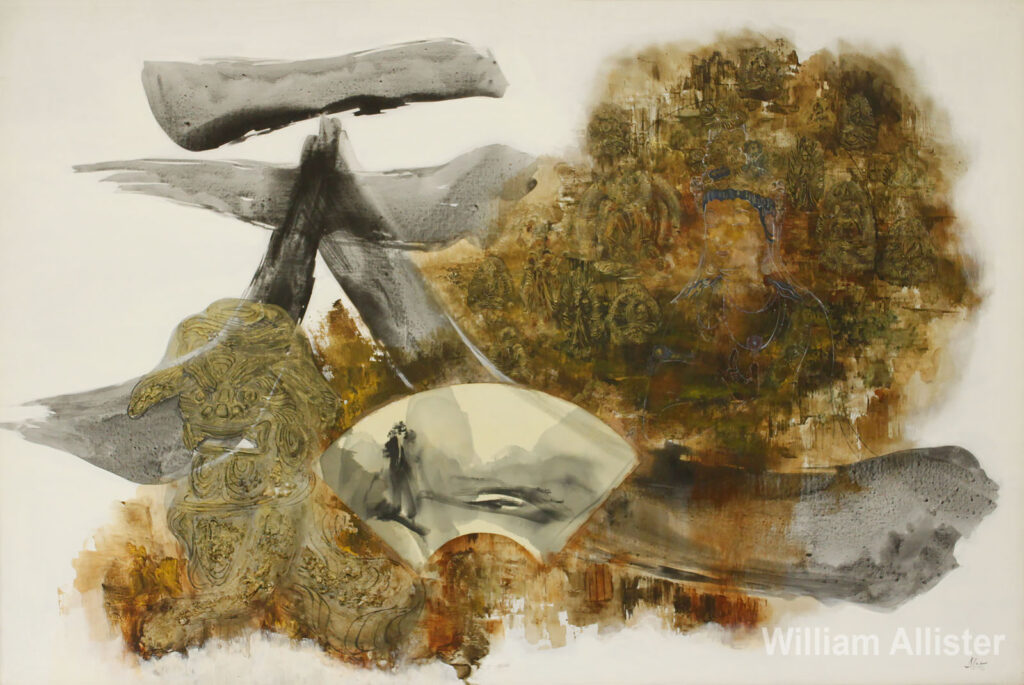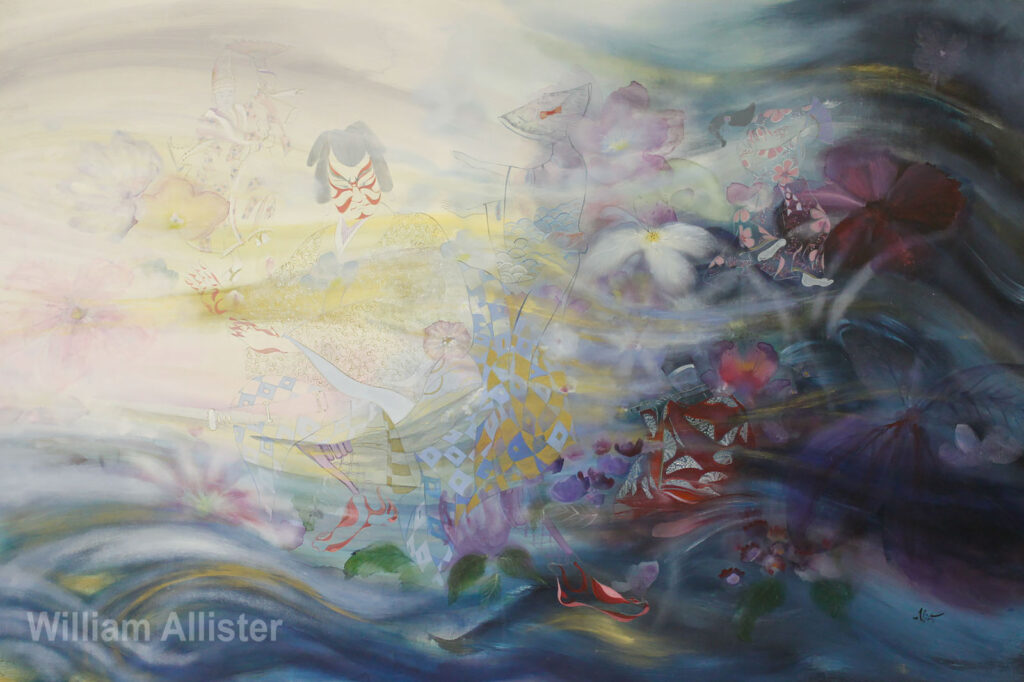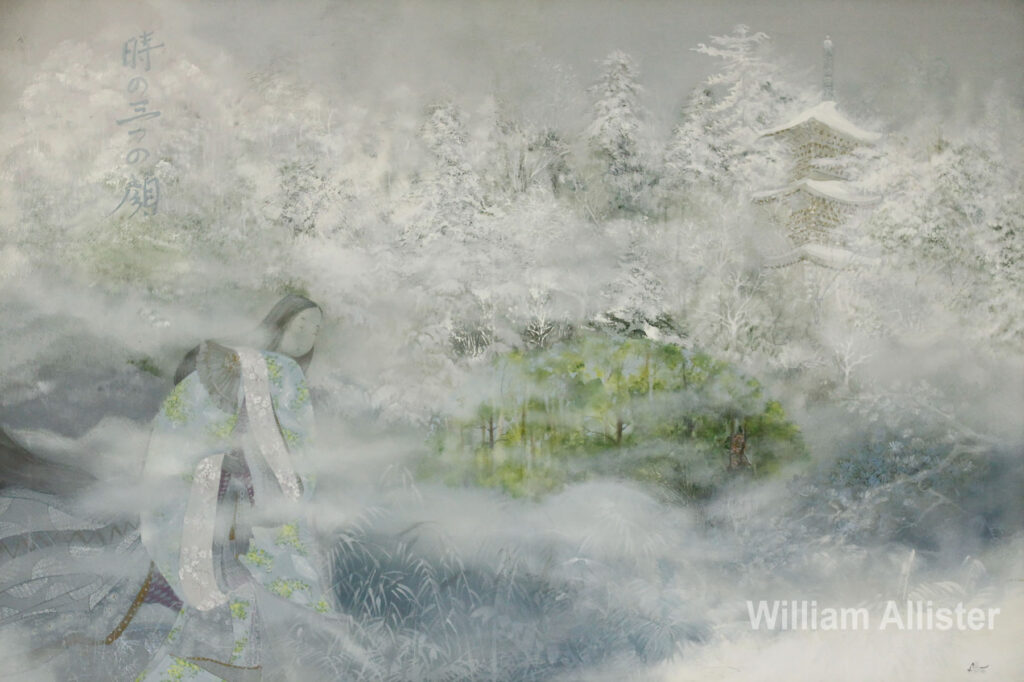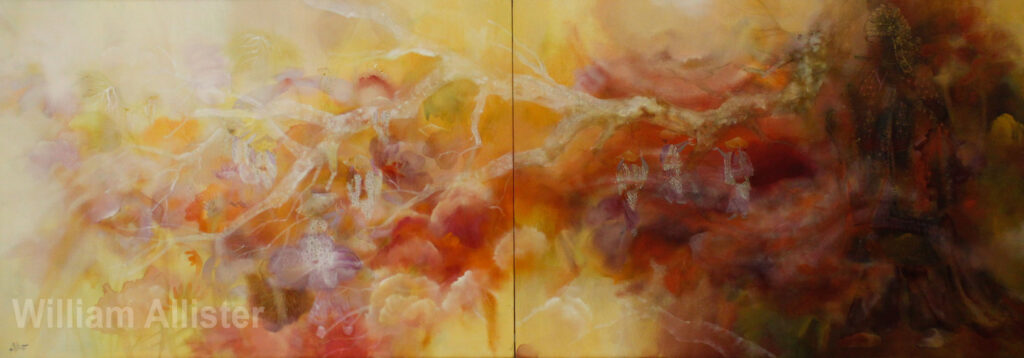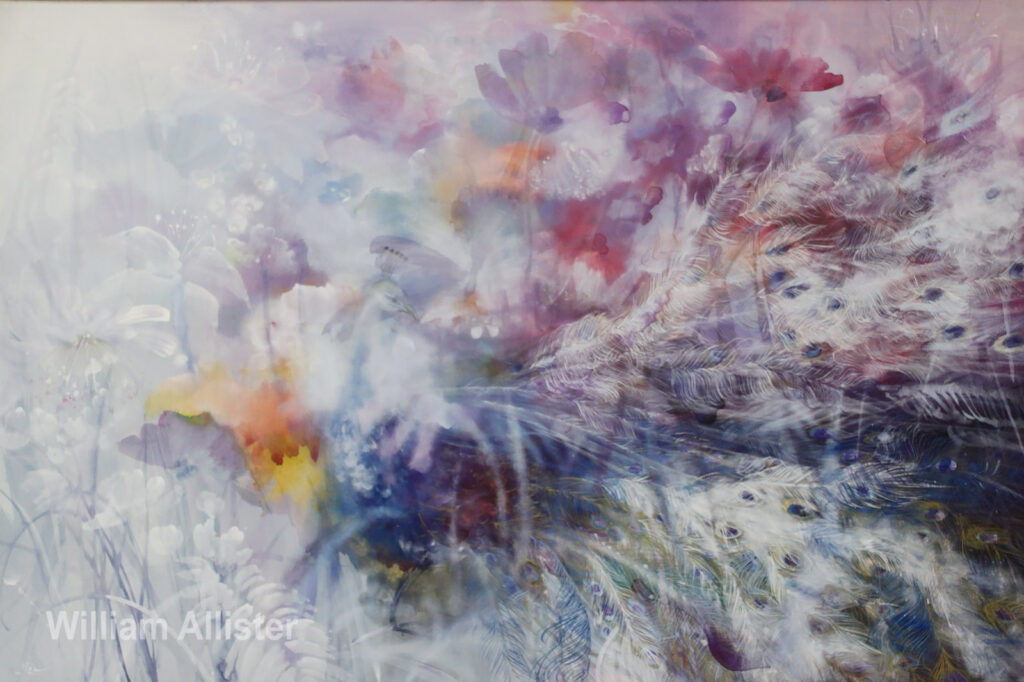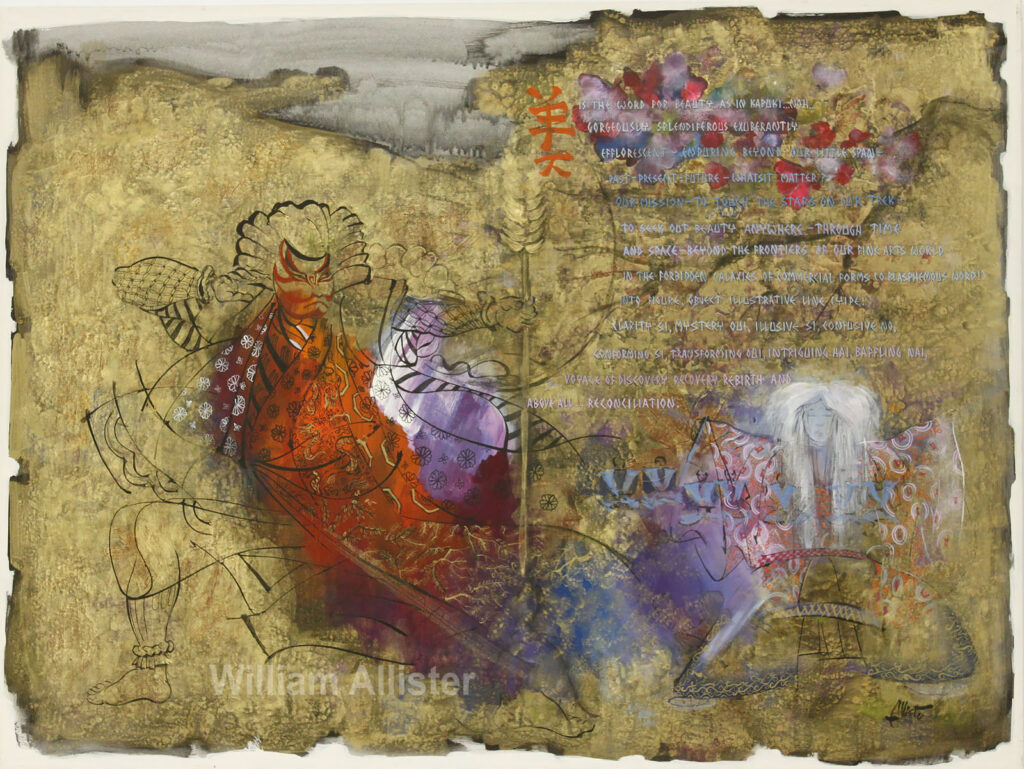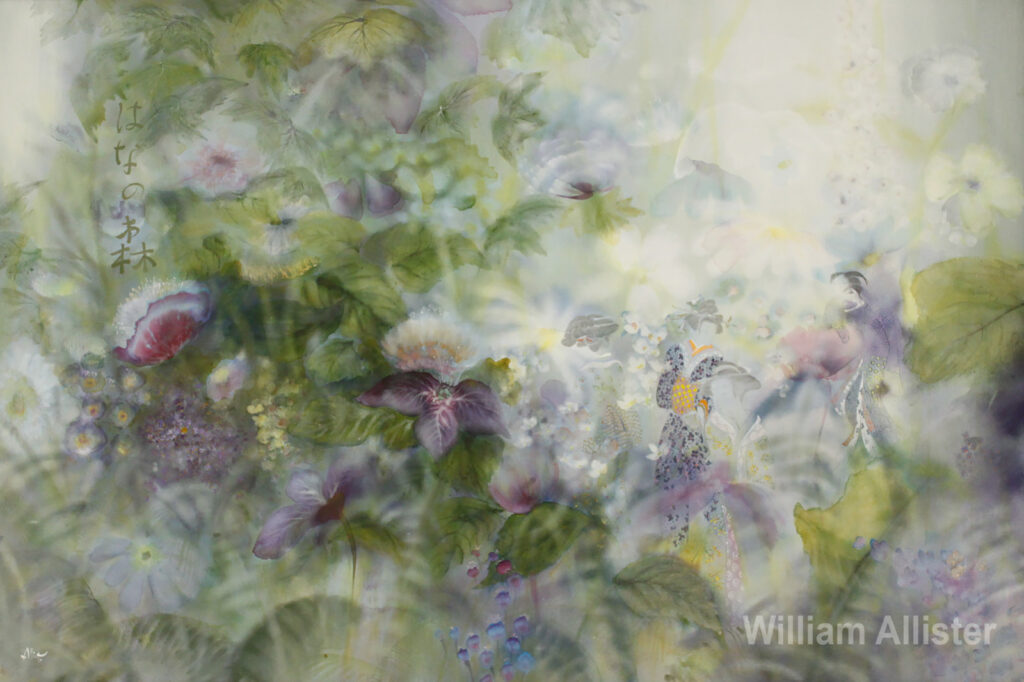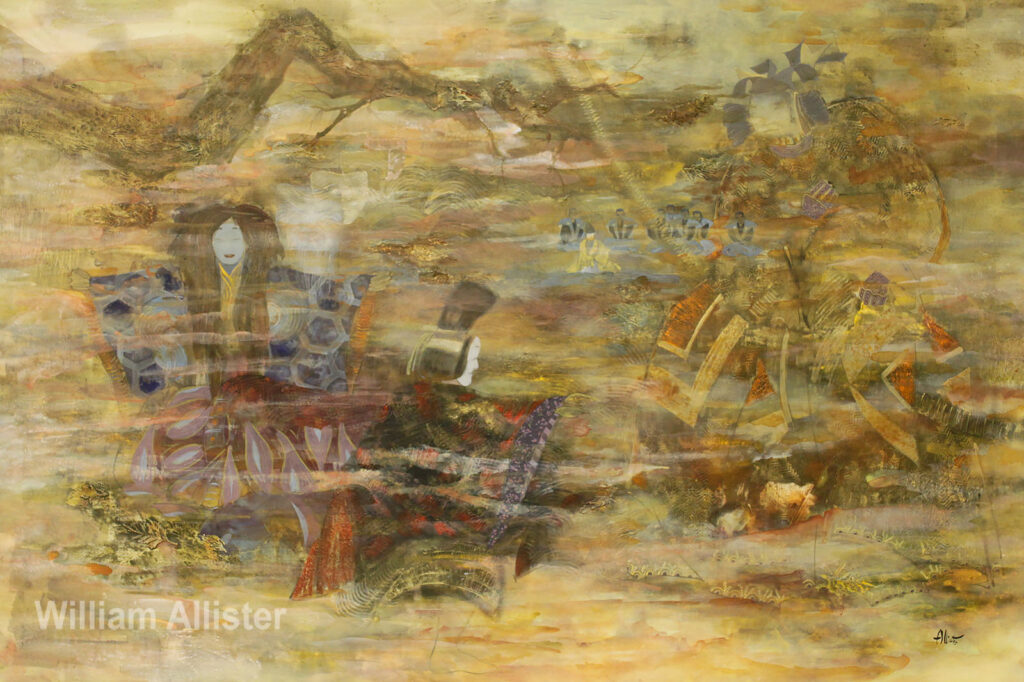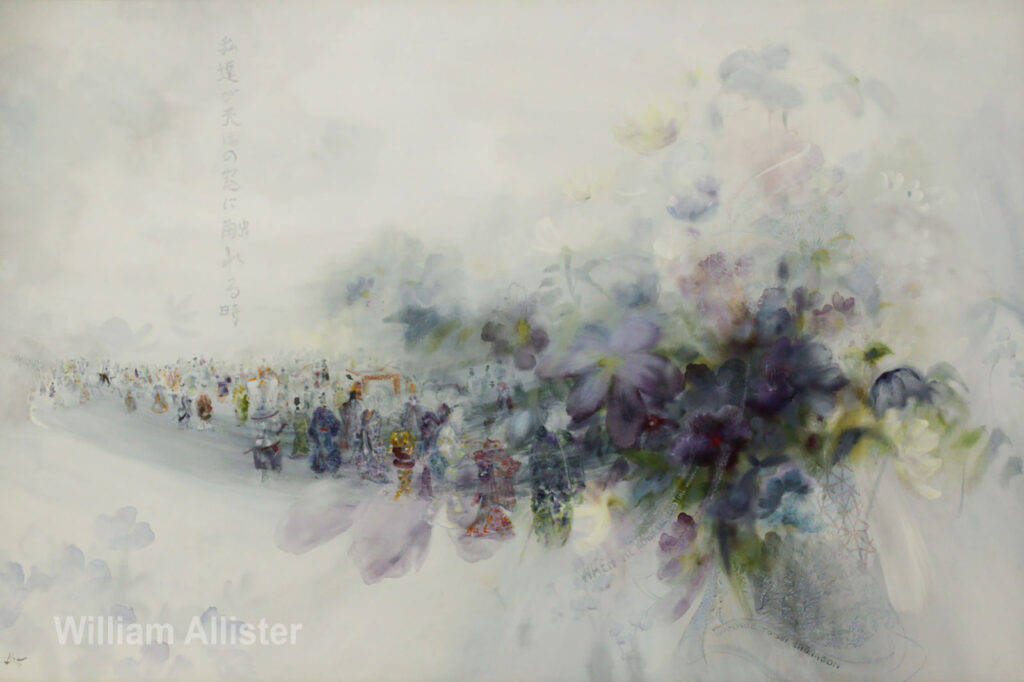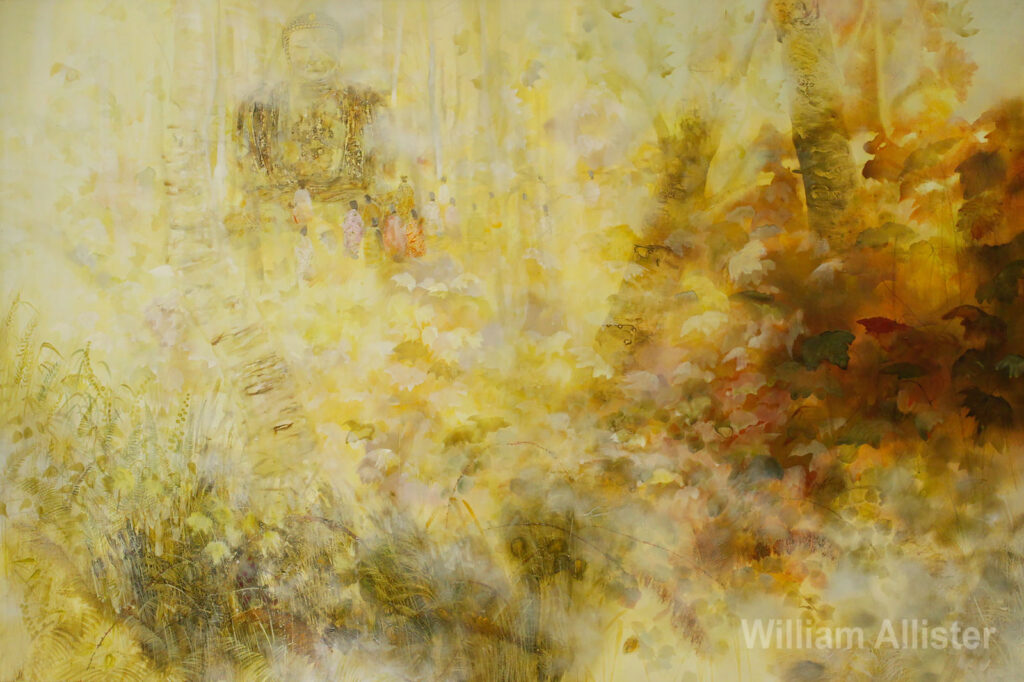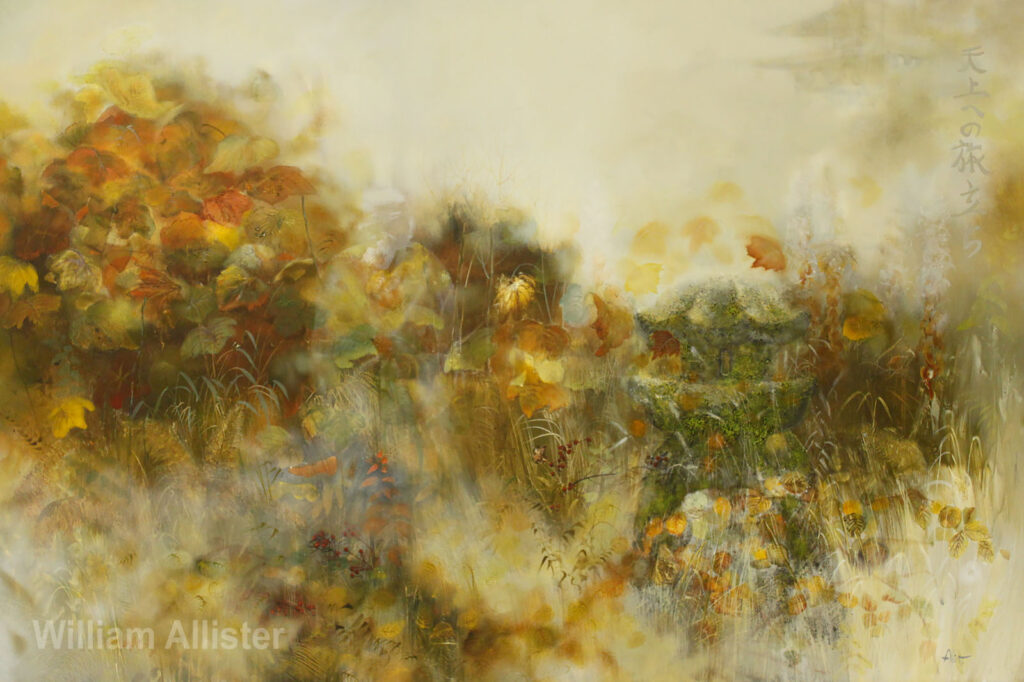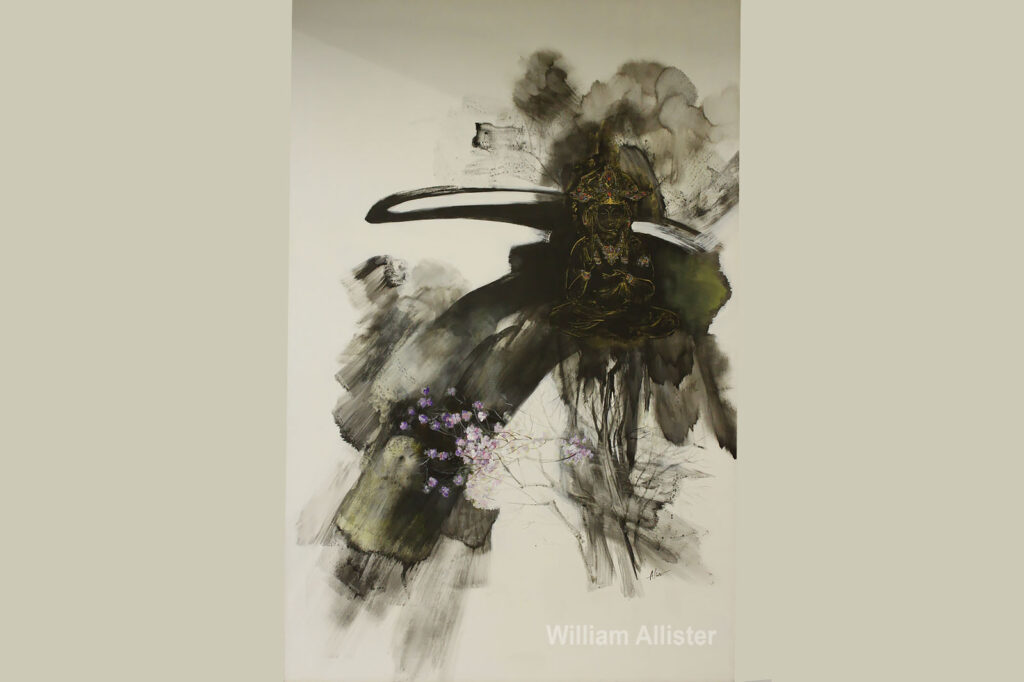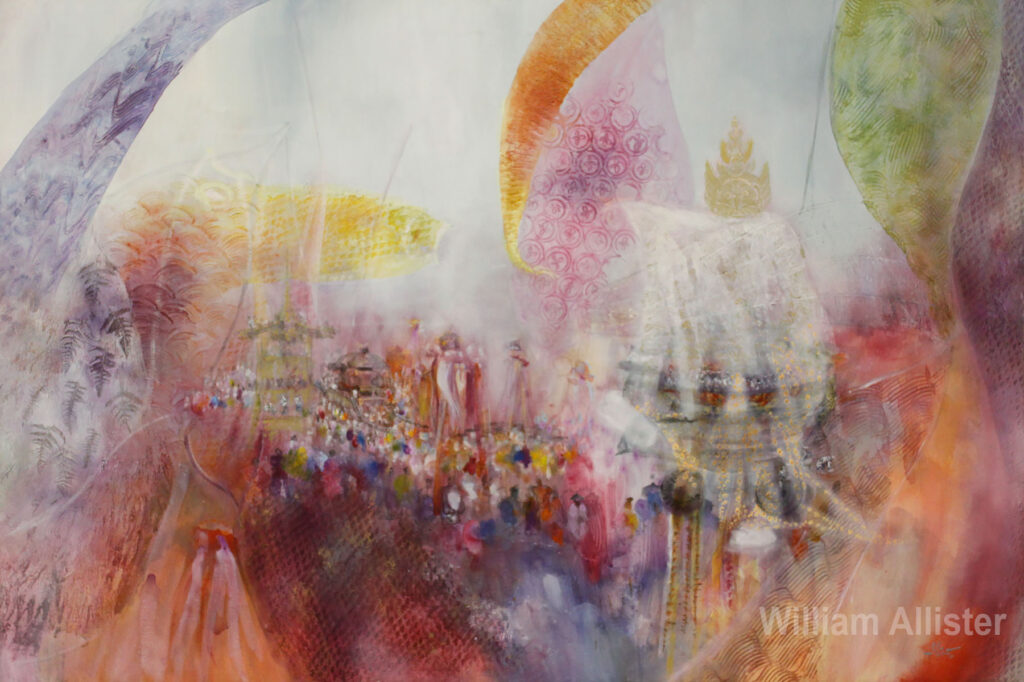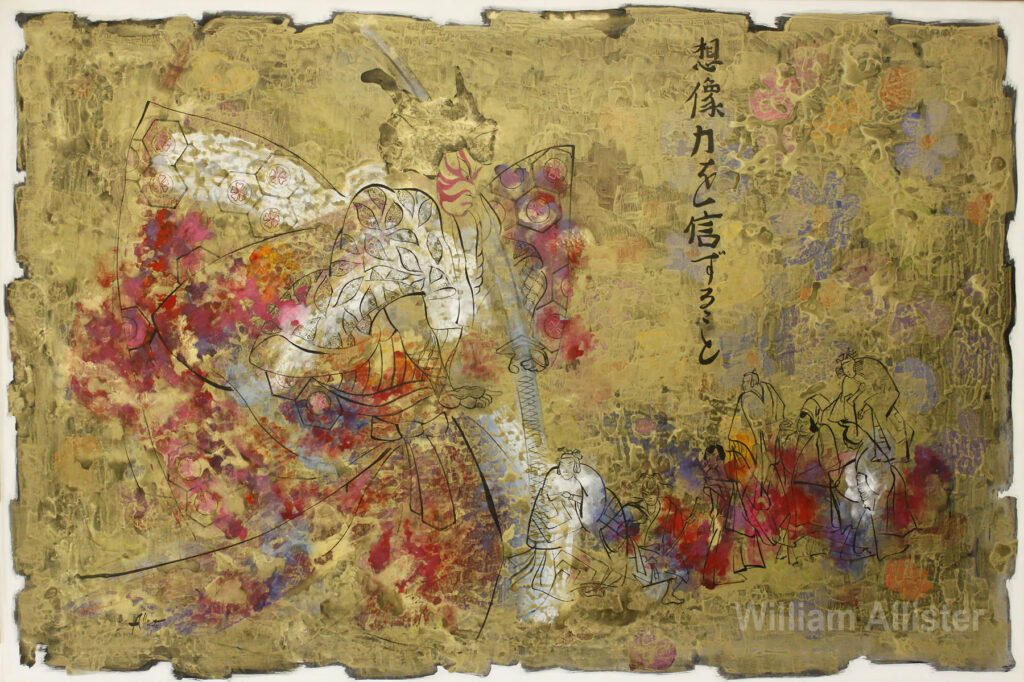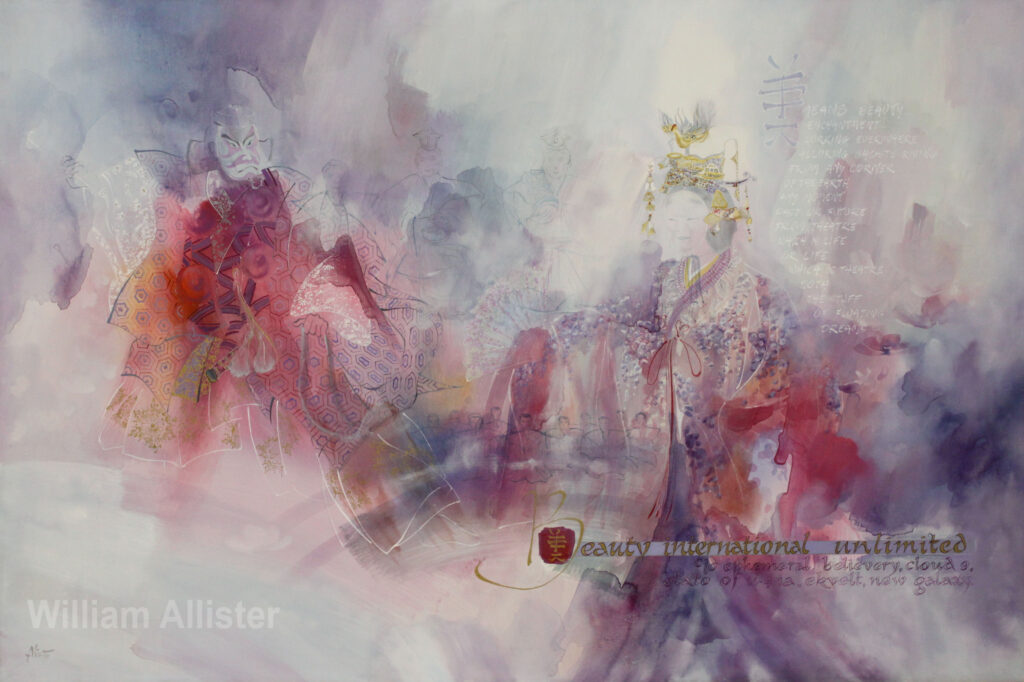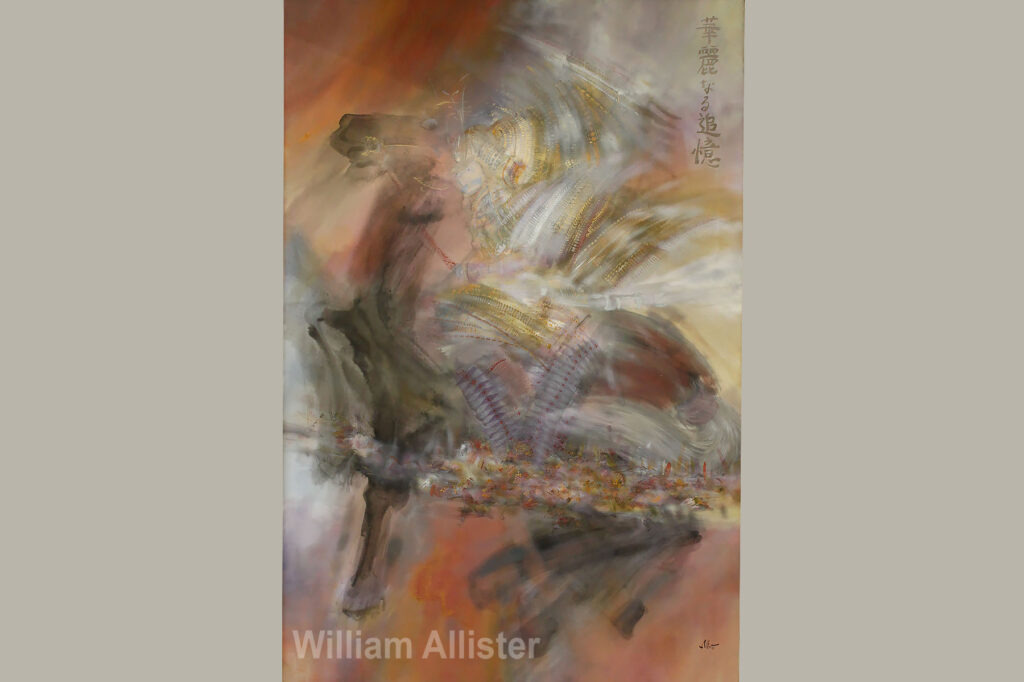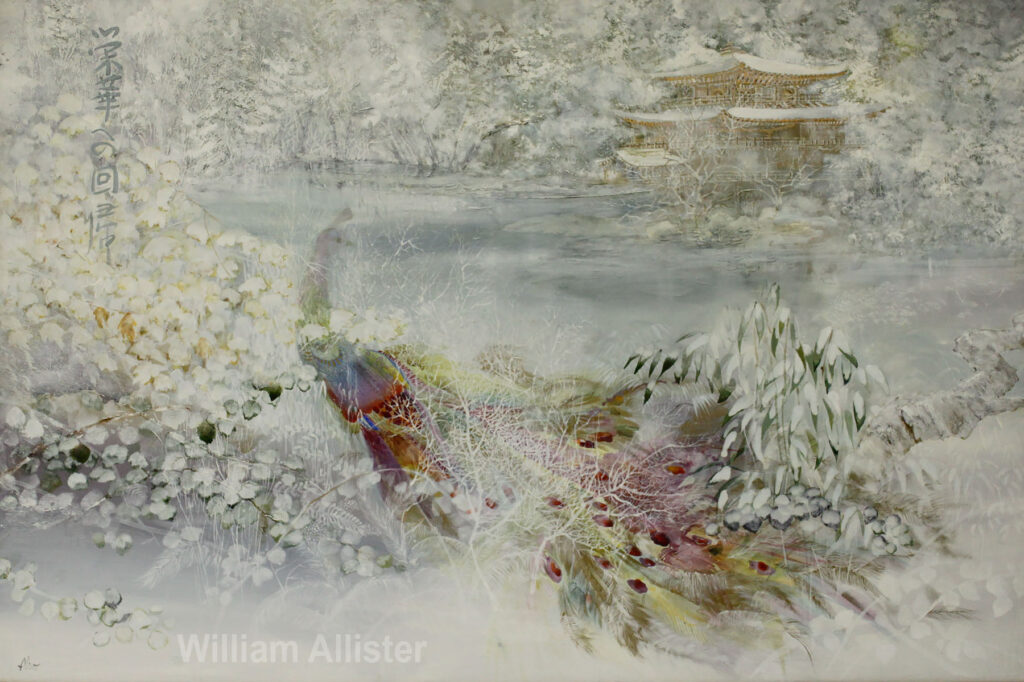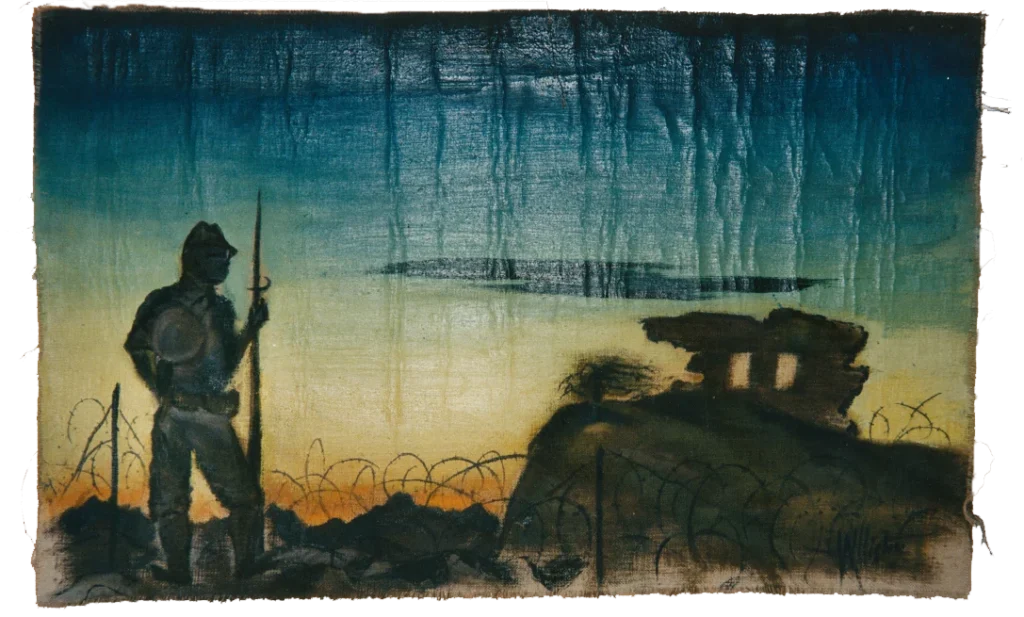A Unique Art Collection
From One of Canada's Outstanding Painters
The paintings of William Allister are featured in private collections and museums in Canada, France, South Africa, Mexico, the US, and Japan, with reproductions sold worldwide.
The EAST WEDS WEST collection, consisting of 18 works of art, had its world premiere at the Canadian Embassy Gallery in Tokyo, Japan, sponsored by the Canadian government. The premier coincided with the opening of the hour-long documentary on Allister’s life, “The Art of Compassion,” which also aired nationally on the C.B.C. The War Museum in Ottawa presently owns “Returning As A Bird,” the first painting of the Collection.
EAST WEDS WEST relates to an almost forgotten ignominious episode regarding the Canadian government’s abandonment of its soldiers sent to fight the Japanese in Hong Kong in WWll. These works were painted as a personal healing for the artist where he endured nearly four years as a POW in the shipyards of Kawawsaki, Tokyo.
Over the years William Allister grew to love and embrace Japanese aesthetics and was inspired to celebrate and incorporate traditional Japanese art, literature and Buddhism into this collection. These works celebrate the coming together of two cultures in peace and harmony.
The Collection has been displayed at the Asian Centre, U.B.C., as well as the Richmond Art Gallery of British Columbia and the Gallery of Greater Victoria.
William Allister’s powerful thought-provoking work continues to captivate audiences from around the world. His enduring wish was to have the East Weds West Collection find a home where the paintings would be permanently displayed and open to the public.
All Pieces Are Acrylic on Canvas
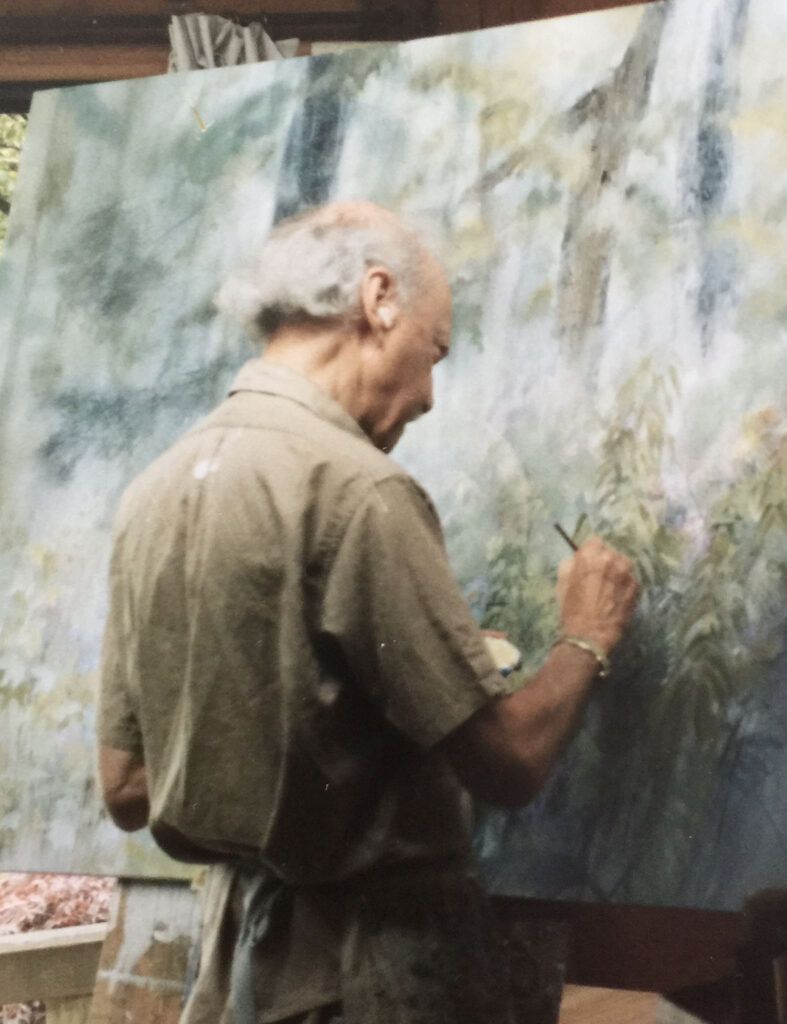
THE ART OF COMPASSION
Documentary on William Allister
THE ART OF COMPASSION presents parallel portraits of two men, William Allister, renowned Canadian artist and Raymond Moriyama, Canada’s top architect. Both men have transformed painful experiences into sources of creative inspiration. William Allister was imprisoned in Japan after the fall of Hong Kong, and Raymond Moriyama was interned in British Columbia after the Canadian government implemented the War Measures Act. Their creative works bridge two cultures which have had a significant impact on their lives.
CANADIAN WAR MUSEUM
On Artist William Allister
The Canadian War Museum is proud to own several paintings by William Allister that were generously donated by his wife, Mona Allister. William painted the work featured here, in 1942, when he was still a prisoner of war. It is on display in the exhibition Forever Changed – Stories From the Second World War.
Background
Inquiries
